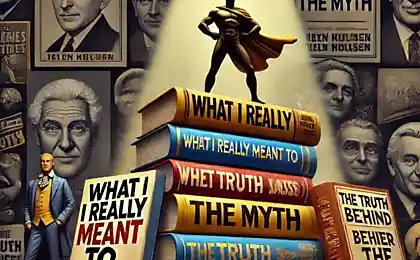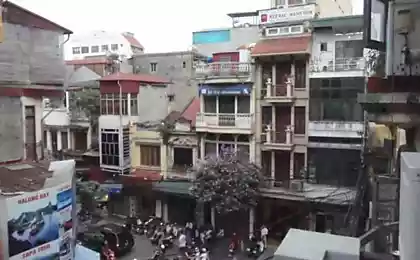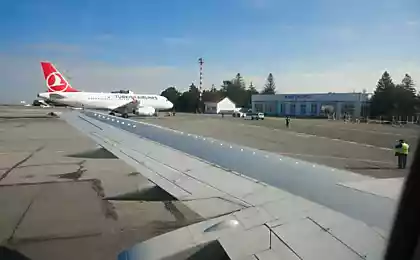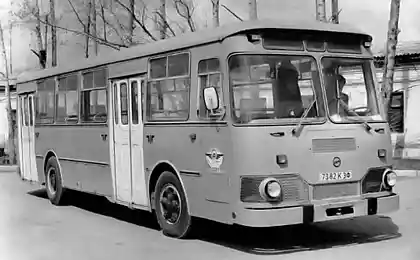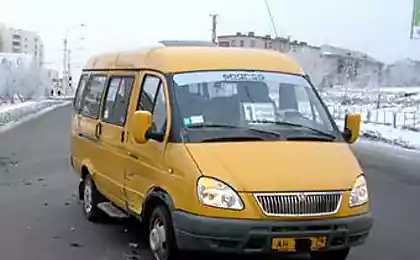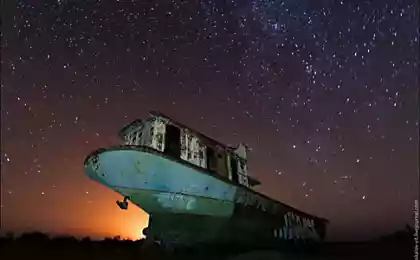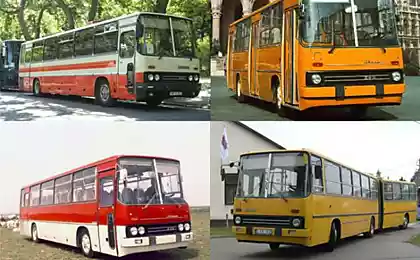2144
To learn how to actually working commercial vehicles in the Russian Federation (7 pics + 2 video)
First of all have to introduce the terminology, otherwise will discuss very different things, mixed in a heap. To begin with - this type of transport, as the "bus" does not exist. Minibus as it is in Russia - a combination of the two things are not going according to the classification "type of transport". Minibuses - this minibuses served commercial transport operators, is the municipal order. That is to say "there are all kinds of transport: buses, trolley buses, trams, taxis, subway" - it is very wrong. So, to fix the - bus - a bus especially small capacity and at the same time, working only at the expense of proceeds from ticket sales. Because there Mosgortrans minibuses FIAT Ducato but working under municipal orders - and this is not the bus. In Perm there are plenty of commercial large buses, working not on the municipal order, but they also are not the minibuses in the understanding of the majority.
To understand? Then we flew farther :)

First, a technical issue - how good minibuses and where their scope of application? Minibus for passenger transport are used in underdeveloped countries, in Russia, in Africa, in South-East Asia, in Latin America (to a lesser extent). In Europe, these routes too, but are very rare - usually in the historic city center, where there are very narrow streets, or for the transport to remote points passazhiroprityazhenie such as attractions. Usually it is just 1-2 route of the city, which employ no more than a dozen cars. Why is that? Everything is very simple. In Europe, able to count the damage inflicted Transport Urban Development and minibuses do a lot more damage than the big buses.

In order to evaluate the damage to the city to transport MAC is the coefficient of efficiency of the use of urban space. It is calculated as the ratio of the dynamic area occupied by a vehicle, to the capacity of the vehicle. City bus large-capacity type LiAZ 5256 or trolley type ZiU-682 has KEIP - 4, 2; Gazel minibus type - 0, 9; Bus small capacity type PAZ-3205 - 2, 4 Maximum efficiency at the tram - it does not maneuver in their lane, and a maximum capacity of passengers. As this piece is shown in practice in Voronezh, 96% of all transport is currently commercial vehicles, as there vypel City Hall tram, trolleybus and strongly broken (but we managed to recapture and save). So among the commercial transport of large buses make up the vast minority. That is the main transportation Voronezh just a bus, according to the above terminology. Those. Voronezh - a city of the winning ideas of Mr. Kozyrev.

What is there now with transport? Firstly there, according to the mayor's office, there are 40 per cent shortage of supply of transport services. That is, people are sorely lacking transport. Minibuses are hammered "in the flesh", even for planting in the final line up in long lines, take intermediate stops do not really. I personally traveled to Voronezh Gazelle (capacity 13 passengers) 21 passenger. If I who said that it happens - I would not have believed it, but we have fun while riding translated. The reason for this fear is that minivans are very small carrying capacity - and passenger traffic in the city is very large. As a result, they are always overwhelmed by purely technological. That is no way to run even more of minibuses on the strip, they have already reached the saturation point, but still not able to cover the existing flow.

At the same time, in Voronezh city passenger transport contributes 43% contribution to the traffic (rush hour). This calculation resulted in units of intersection Koltsovskaya / Moscow avenue. That is almost half of the traffic jams of the city bus is created. Further, they are overwhelmed with stopping points, as they are designed for a reasonable number of buses per hour. In reality, the Moscow avenue now there are more than 20 routes (imagine what they orient people!), And landing / boarding passes of passengers in two rows at each stop. This, of course, terribly slows the flow and public transport and private vehicles. But I stress - it is a technological barrier: Stop always has a limited bandwidth, and large buses stop resource used a lot less.
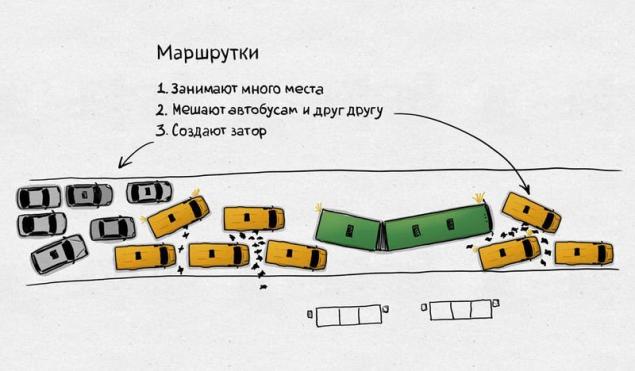
Special focus attention: a big bus is effectively used area, since his driver, engine, secure clearance space is wasted once, not 13 times as in the case of a gazelle is able to transport the same number of passengers. In the tram, especially articulated, still effective - maybe a lateral dimension less secure, and it has an effective length arbitrarily scalable. That is not achieved due to compaction of passengers, namely due to the construction of vehicles.
Another important point - the behavior in traffic. Minibuses constantly maneuver, as selected and planted passengers. And they do it not only in the area of stops, but everywhere. This greatly slows down traffic. Aggressive driving habits, which we like to call "maneuverability of buses", provokes numerous transportation accidents, constitute a threat to the lives of people and the flow slows even more. In Moscow, minibuses do not have much, but in any provincial town of Russia - they are one of the main causes of traffic jams and power pile accident.

Another important point - the vans have a much lower degree of occupant protection in the event of an accident, in particular, are often overturned. The network can be easily found Gazelle crash tests conducted by the magazine "At the wheel!") If they summarize - involved in an accident at a speed of 60 km / h, almost guaranteed - you're dead or disabled for life. Similar story with the keyway, Ford and other Fiat. The reason is that this alteration of the truck, and not from the ground by the vehicles as passenger cars. Because of this, they are cheaper, less maintained, but is not very safe, are usually worthless suspension, etc. All these things are avoidable, but if you remove them and improve the safety of transport in minivans to large buses, the price of the bus will cost no lift to the carrier.
So, for minibuses clear. Now let's move to the commercial component of the vehicle.
The usual scheme of building a business in a minibus as follows: the driver owns a minibus, some firm knocks himself the route and puts on a bus. For this driver pays half of the proceeds of this office as a tribute to the rest chinitsya and lives by himself. Bureau officials unfasten the money, so they opened the routes, traffic police and UGADNu that they did not check them. At the same time the main interest of the office is not it :) main interest - the turnover of cash. Almost all places in Russia where there is a high turnover of cash are cashing places shadow capital. An accurate count of the number of passengers is very difficult to work on routes almost always more buses than spelled out in the documents as a result of strict financial statements no longer exists at all. Across the core business owners of minibuses income from them - a tiny fraction of turnover. But the mechanism is very important to them, because they work on the shuttles as a factory for the laundering of black money.
For example - in Samara something officially about 30 carriers, while in reality all this business has three people - all very serious and respected public figures, with a bunch of their business. But when the mayor's office said that the fare will go into the white scheme with cashless payment transportation card, these dear people expressed in the sense that the municipality ... stunned. On the sidelines of gentlemen with ties to explain that: "You Th, nah I need this bus if cashing would not ?! Yes, I throw off the business because ... "In public, attracting the media to disseminate ideas that because of the electronic travel they have to raise prices for the purchase of validators. Samara Well we'll see how and what all will end. In a number of minibuses electronic travel have already appeared. In Voronezh, as I remember 47 carriers officially, really belongs to all 5 distinguished people, including top officials and Deptransa UGADNa.
But back to the financial side of the issue. The actual owner of the business is each driver individually, since it owns the bus and it raises money. Occasionally there are times when the buses belong to the office, but most everyone is looking for "the driver with his bus." These drivers have been working day and night on the bus, and then they mend themselves. Money they do not have much, so repairing it as cheaply as possible. Without any control. Garage have also not - the buses kept at the house and go to the line again without any control. In Samara was a wonderful event - the traffic police and called the passengers reported the bus, with failed brakes going down the line. STSI think that people exaggerate ... but went to check. It turned out really - the driver braked to bus hugging curbs, the braking system was not defective. To the question: "Do you think in general what ?!" He replied: "I do not want to land the passengers - I would have drove to the end, and went repaired ...»

That is, the buses are out of control, in terms of total savings. Drivers are working around the clock, because they are fed only their feet. In Voronezh was the case when the driver fell asleep at the keyway and drove in the go ahead walking tractor, because the night before repairing the bus. It was on the north bridge, but fortunately a bus fell off a bridge ... just sent to the light one passenger. Not uncommon for heart attacks, and other wonders of the drivers behind the wheel. For example, in the same Voronezh bus crashed into a pole because of the epileptic fit at the driver (!). By law, all taxis must sign the permit at the mechanic and the doctor. But realistically, signing vouchers as a service included in the money that drivers unfasten owner of the route.
Drivers do not have any social funds, in fact no one monitors their health. So often on routes employs people who served in the area, very young men, do not really know how to drive, those who fired from the municipal fleet for various violations ... That is the level of qualifications of drivers on the routes - a direct consequence of the financial structure of the transport industry - it is not "an accident which can be easily corrected ».
All financial activities of firms 'operating' budget misses the bus. They are registered as individual entrepreneurs, to simplified taxation. That is paying 6%. At the same time they do not show real profits, take into account that someone from the outside is simply not realistic. That is, in fact, they are paid less. In fact, he concluded in a white minibus economy would dramatically improve budgetary security in the cities. Municipal Transport insurance pays all pension funds and so on. 40% of the payroll, he pays taxes on income, property and so on. In the cost structure of a ticket for public transport takes 60% of payroll. In addition to this municipal enterprises improve the quality of skills of employees, invested in training, is awarded for highly qualified and so forth. There, too, is not all right with this, too, is already forced to try to save ... but still with minibuses heaven and earth.
That is, we are regularly asked, "And that is why the municipal unprofitable and profitable bus ?!" Yes, because the city pays all taxes, all fees, watching those he works as a driver, repair rolling stock, and so on ... Commerce, if not profitable to do something - and she does not. Therefore, in the city of Voronezh won mashrutok, minibuses in remote areas do not have. In the evening, they stop working as soon as the flow falls, often just dropping off people in the middle of the route, as the driver found that the flight does not pay off. Naturally, they do not observe any schedules. For example, in Voronezh, to stimulate the bus to work in the evening after 22 hours of the tariff is set to 1, 5 times more than during the day. Therefore, from 21 to 22 hours to leave on a shuttle bus complicated: they stand on end and wait until the bus stops accumulate more passengers to collect them at a higher rate.
Again, even the machines of the route to each other competitors. A car Nearby trails rivals twice. So they begin to be worn on the street like crazy. In Voronezh, because large buses flew at full speed on the tram: obogonyal right of a competing bus and staring at it :) Of course such a system is practically impossible to enter tickets: to be administered, it is necessary to understand what someone who will have to finance transfer. And the whole system is built on the fact that someone is someone tailors money. It becomes even more interesting when someone is trying to break the system. The Tomsk Mayor's Office tried to rein in the bus, with the result that they just do not come out on the line. And at the tram depot on the tracks at night someone poured concrete machine :) A bus depots were blocked by "striking" minibuses. In Bishkek marshrutchiki required to raise the price, the municipality refused. Then they announced that they carry on the old price will not be ... but not all. Some machines on routes out - during which he broke in the final glass "strikers" colleagues.
In almost any city marshrutchiki, the real owners have a good lobby in the government. The purpose is to save money laundering system. Here in Samara - the three main people - two members of the regional Duma. Of course it's scary influential people who before the election are trying to put in a chair head of the Department of Transport of their rights. I'm on the fingers of one hand can not list the city, where the head of transport is not associated with marshrutochnym lobby. That's the next head of the Voronezh each deptransa - always protege marshrutochnogo lobby. One such even had to withdraw, after prosecutors began to figure out how he stole the money, while still the owner of the company marshrutochnoy. Guess who is betrothed Togliatti main "transporter" the mayor's office that he decided to destroy the trolley? :) That is marshrutochnoe lobby strongly tied to the black financial system is one of the major obstacles to the normal transport reform in Russia.
I often hear this thought: so do awesome municipal transport, then we move on him with minibuses! People advocate for "fair competition." But what is it honest, if the bus does not pay taxes, do not care about the technical condition, do not serve social focus on a schedule? That is, the driver must also tram car at the garage to repair itself? Minibuses do not have to wait long, because the line runs a bunch of cars, drivers bought very cheaply from them do not pay taxes, and so forth. People we did not think about what is likely to die in an accident, and are willing to endure to go standing in raskaryaku, but quickly ... As a result of all bus takes paying passengers from the bus stop, leaving some beneficiaries. In public transport, and so strangled with taxes, no money left to improve their own status. After all duplicate bus routes of public transport, often even to 100 percent. Try to win honestly cards from tricksters. Then you talk about competition and public transport minibuses.
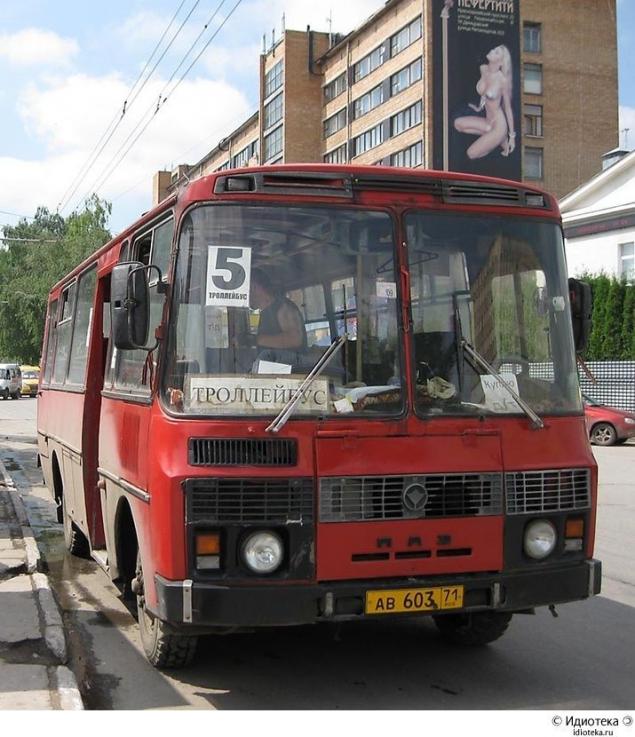
It becomes even more interesting when you try to close the route-doubler that bankrupts the trolley. It is practically impossible to do - it magically remains in the route network, even if the decision is made at the level of mayor. In cities where the mayor does not that sort becomes more and more interesting as soon as the route trolley starts to make money TTU immediately appears doubler-bus, and the requirement to reduce the release of the TTU. Deptrans usually knows which routes carry money ... and, paradoxically, it immediately appears commerce. And Commerce release on the route increases, and public transport to reduce its ordered. Passengers at the stop seeing the bus to wait for a long time, and taxis are frequent - and begin to support the decision to remove a bus (!). People will also pull down the transportation system, not knowing "where the legs grow."
We still often say that here in the bus I ride sitting - and the bus stand is necessary. The thing that really kind of urban bus transport, ie assumes a very rapid transportation. It is believed that a person can stand for 30 minutes while traveling from home to work. But we have because of traffic jams buses go slowly and people are tired to stand.
To understand? Then we flew farther :)

First, a technical issue - how good minibuses and where their scope of application? Minibus for passenger transport are used in underdeveloped countries, in Russia, in Africa, in South-East Asia, in Latin America (to a lesser extent). In Europe, these routes too, but are very rare - usually in the historic city center, where there are very narrow streets, or for the transport to remote points passazhiroprityazhenie such as attractions. Usually it is just 1-2 route of the city, which employ no more than a dozen cars. Why is that? Everything is very simple. In Europe, able to count the damage inflicted Transport Urban Development and minibuses do a lot more damage than the big buses.

In order to evaluate the damage to the city to transport MAC is the coefficient of efficiency of the use of urban space. It is calculated as the ratio of the dynamic area occupied by a vehicle, to the capacity of the vehicle. City bus large-capacity type LiAZ 5256 or trolley type ZiU-682 has KEIP - 4, 2; Gazel minibus type - 0, 9; Bus small capacity type PAZ-3205 - 2, 4 Maximum efficiency at the tram - it does not maneuver in their lane, and a maximum capacity of passengers. As this piece is shown in practice in Voronezh, 96% of all transport is currently commercial vehicles, as there vypel City Hall tram, trolleybus and strongly broken (but we managed to recapture and save). So among the commercial transport of large buses make up the vast minority. That is the main transportation Voronezh just a bus, according to the above terminology. Those. Voronezh - a city of the winning ideas of Mr. Kozyrev.

What is there now with transport? Firstly there, according to the mayor's office, there are 40 per cent shortage of supply of transport services. That is, people are sorely lacking transport. Minibuses are hammered "in the flesh", even for planting in the final line up in long lines, take intermediate stops do not really. I personally traveled to Voronezh Gazelle (capacity 13 passengers) 21 passenger. If I who said that it happens - I would not have believed it, but we have fun while riding translated. The reason for this fear is that minivans are very small carrying capacity - and passenger traffic in the city is very large. As a result, they are always overwhelmed by purely technological. That is no way to run even more of minibuses on the strip, they have already reached the saturation point, but still not able to cover the existing flow.

At the same time, in Voronezh city passenger transport contributes 43% contribution to the traffic (rush hour). This calculation resulted in units of intersection Koltsovskaya / Moscow avenue. That is almost half of the traffic jams of the city bus is created. Further, they are overwhelmed with stopping points, as they are designed for a reasonable number of buses per hour. In reality, the Moscow avenue now there are more than 20 routes (imagine what they orient people!), And landing / boarding passes of passengers in two rows at each stop. This, of course, terribly slows the flow and public transport and private vehicles. But I stress - it is a technological barrier: Stop always has a limited bandwidth, and large buses stop resource used a lot less.

Special focus attention: a big bus is effectively used area, since his driver, engine, secure clearance space is wasted once, not 13 times as in the case of a gazelle is able to transport the same number of passengers. In the tram, especially articulated, still effective - maybe a lateral dimension less secure, and it has an effective length arbitrarily scalable. That is not achieved due to compaction of passengers, namely due to the construction of vehicles.
Another important point - the behavior in traffic. Minibuses constantly maneuver, as selected and planted passengers. And they do it not only in the area of stops, but everywhere. This greatly slows down traffic. Aggressive driving habits, which we like to call "maneuverability of buses", provokes numerous transportation accidents, constitute a threat to the lives of people and the flow slows even more. In Moscow, minibuses do not have much, but in any provincial town of Russia - they are one of the main causes of traffic jams and power pile accident.

Another important point - the vans have a much lower degree of occupant protection in the event of an accident, in particular, are often overturned. The network can be easily found Gazelle crash tests conducted by the magazine "At the wheel!") If they summarize - involved in an accident at a speed of 60 km / h, almost guaranteed - you're dead or disabled for life. Similar story with the keyway, Ford and other Fiat. The reason is that this alteration of the truck, and not from the ground by the vehicles as passenger cars. Because of this, they are cheaper, less maintained, but is not very safe, are usually worthless suspension, etc. All these things are avoidable, but if you remove them and improve the safety of transport in minivans to large buses, the price of the bus will cost no lift to the carrier.
So, for minibuses clear. Now let's move to the commercial component of the vehicle.
The usual scheme of building a business in a minibus as follows: the driver owns a minibus, some firm knocks himself the route and puts on a bus. For this driver pays half of the proceeds of this office as a tribute to the rest chinitsya and lives by himself. Bureau officials unfasten the money, so they opened the routes, traffic police and UGADNu that they did not check them. At the same time the main interest of the office is not it :) main interest - the turnover of cash. Almost all places in Russia where there is a high turnover of cash are cashing places shadow capital. An accurate count of the number of passengers is very difficult to work on routes almost always more buses than spelled out in the documents as a result of strict financial statements no longer exists at all. Across the core business owners of minibuses income from them - a tiny fraction of turnover. But the mechanism is very important to them, because they work on the shuttles as a factory for the laundering of black money.
For example - in Samara something officially about 30 carriers, while in reality all this business has three people - all very serious and respected public figures, with a bunch of their business. But when the mayor's office said that the fare will go into the white scheme with cashless payment transportation card, these dear people expressed in the sense that the municipality ... stunned. On the sidelines of gentlemen with ties to explain that: "You Th, nah I need this bus if cashing would not ?! Yes, I throw off the business because ... "In public, attracting the media to disseminate ideas that because of the electronic travel they have to raise prices for the purchase of validators. Samara Well we'll see how and what all will end. In a number of minibuses electronic travel have already appeared. In Voronezh, as I remember 47 carriers officially, really belongs to all 5 distinguished people, including top officials and Deptransa UGADNa.
But back to the financial side of the issue. The actual owner of the business is each driver individually, since it owns the bus and it raises money. Occasionally there are times when the buses belong to the office, but most everyone is looking for "the driver with his bus." These drivers have been working day and night on the bus, and then they mend themselves. Money they do not have much, so repairing it as cheaply as possible. Without any control. Garage have also not - the buses kept at the house and go to the line again without any control. In Samara was a wonderful event - the traffic police and called the passengers reported the bus, with failed brakes going down the line. STSI think that people exaggerate ... but went to check. It turned out really - the driver braked to bus hugging curbs, the braking system was not defective. To the question: "Do you think in general what ?!" He replied: "I do not want to land the passengers - I would have drove to the end, and went repaired ...»

That is, the buses are out of control, in terms of total savings. Drivers are working around the clock, because they are fed only their feet. In Voronezh was the case when the driver fell asleep at the keyway and drove in the go ahead walking tractor, because the night before repairing the bus. It was on the north bridge, but fortunately a bus fell off a bridge ... just sent to the light one passenger. Not uncommon for heart attacks, and other wonders of the drivers behind the wheel. For example, in the same Voronezh bus crashed into a pole because of the epileptic fit at the driver (!). By law, all taxis must sign the permit at the mechanic and the doctor. But realistically, signing vouchers as a service included in the money that drivers unfasten owner of the route.
Drivers do not have any social funds, in fact no one monitors their health. So often on routes employs people who served in the area, very young men, do not really know how to drive, those who fired from the municipal fleet for various violations ... That is the level of qualifications of drivers on the routes - a direct consequence of the financial structure of the transport industry - it is not "an accident which can be easily corrected ».
All financial activities of firms 'operating' budget misses the bus. They are registered as individual entrepreneurs, to simplified taxation. That is paying 6%. At the same time they do not show real profits, take into account that someone from the outside is simply not realistic. That is, in fact, they are paid less. In fact, he concluded in a white minibus economy would dramatically improve budgetary security in the cities. Municipal Transport insurance pays all pension funds and so on. 40% of the payroll, he pays taxes on income, property and so on. In the cost structure of a ticket for public transport takes 60% of payroll. In addition to this municipal enterprises improve the quality of skills of employees, invested in training, is awarded for highly qualified and so forth. There, too, is not all right with this, too, is already forced to try to save ... but still with minibuses heaven and earth.
That is, we are regularly asked, "And that is why the municipal unprofitable and profitable bus ?!" Yes, because the city pays all taxes, all fees, watching those he works as a driver, repair rolling stock, and so on ... Commerce, if not profitable to do something - and she does not. Therefore, in the city of Voronezh won mashrutok, minibuses in remote areas do not have. In the evening, they stop working as soon as the flow falls, often just dropping off people in the middle of the route, as the driver found that the flight does not pay off. Naturally, they do not observe any schedules. For example, in Voronezh, to stimulate the bus to work in the evening after 22 hours of the tariff is set to 1, 5 times more than during the day. Therefore, from 21 to 22 hours to leave on a shuttle bus complicated: they stand on end and wait until the bus stops accumulate more passengers to collect them at a higher rate.
Again, even the machines of the route to each other competitors. A car Nearby trails rivals twice. So they begin to be worn on the street like crazy. In Voronezh, because large buses flew at full speed on the tram: obogonyal right of a competing bus and staring at it :) Of course such a system is practically impossible to enter tickets: to be administered, it is necessary to understand what someone who will have to finance transfer. And the whole system is built on the fact that someone is someone tailors money. It becomes even more interesting when someone is trying to break the system. The Tomsk Mayor's Office tried to rein in the bus, with the result that they just do not come out on the line. And at the tram depot on the tracks at night someone poured concrete machine :) A bus depots were blocked by "striking" minibuses. In Bishkek marshrutchiki required to raise the price, the municipality refused. Then they announced that they carry on the old price will not be ... but not all. Some machines on routes out - during which he broke in the final glass "strikers" colleagues.
In almost any city marshrutchiki, the real owners have a good lobby in the government. The purpose is to save money laundering system. Here in Samara - the three main people - two members of the regional Duma. Of course it's scary influential people who before the election are trying to put in a chair head of the Department of Transport of their rights. I'm on the fingers of one hand can not list the city, where the head of transport is not associated with marshrutochnym lobby. That's the next head of the Voronezh each deptransa - always protege marshrutochnogo lobby. One such even had to withdraw, after prosecutors began to figure out how he stole the money, while still the owner of the company marshrutochnoy. Guess who is betrothed Togliatti main "transporter" the mayor's office that he decided to destroy the trolley? :) That is marshrutochnoe lobby strongly tied to the black financial system is one of the major obstacles to the normal transport reform in Russia.
I often hear this thought: so do awesome municipal transport, then we move on him with minibuses! People advocate for "fair competition." But what is it honest, if the bus does not pay taxes, do not care about the technical condition, do not serve social focus on a schedule? That is, the driver must also tram car at the garage to repair itself? Minibuses do not have to wait long, because the line runs a bunch of cars, drivers bought very cheaply from them do not pay taxes, and so forth. People we did not think about what is likely to die in an accident, and are willing to endure to go standing in raskaryaku, but quickly ... As a result of all bus takes paying passengers from the bus stop, leaving some beneficiaries. In public transport, and so strangled with taxes, no money left to improve their own status. After all duplicate bus routes of public transport, often even to 100 percent. Try to win honestly cards from tricksters. Then you talk about competition and public transport minibuses.

It becomes even more interesting when you try to close the route-doubler that bankrupts the trolley. It is practically impossible to do - it magically remains in the route network, even if the decision is made at the level of mayor. In cities where the mayor does not that sort becomes more and more interesting as soon as the route trolley starts to make money TTU immediately appears doubler-bus, and the requirement to reduce the release of the TTU. Deptrans usually knows which routes carry money ... and, paradoxically, it immediately appears commerce. And Commerce release on the route increases, and public transport to reduce its ordered. Passengers at the stop seeing the bus to wait for a long time, and taxis are frequent - and begin to support the decision to remove a bus (!). People will also pull down the transportation system, not knowing "where the legs grow."
We still often say that here in the bus I ride sitting - and the bus stand is necessary. The thing that really kind of urban bus transport, ie assumes a very rapid transportation. It is believed that a person can stand for 30 minutes while traveling from home to work. But we have because of traffic jams buses go slowly and people are tired to stand.


